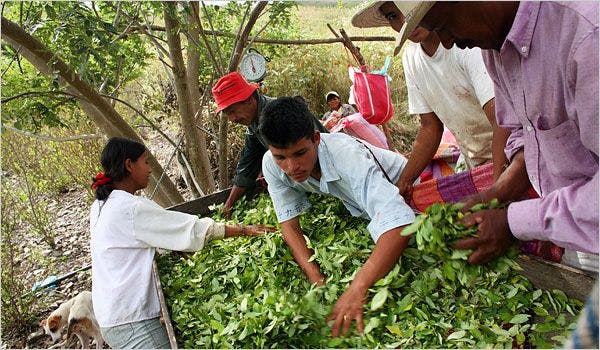Colombia says rise in coca cultivation shows why it was right to stop spraying
A new UN study showing a steep rise in the cultivation of the leaf used to make cocaine offers fresh support to Colombia’s recent decision to end the aerial spraying of drug crops with herbicides, government officials said on Thursday.
The area under coca cultivation rose 44% in 2014 to 69,000 hectares or 175,000 acres, according to a report released on Thursday by the UN Office on Drugs and Crime, which monitors the crops by satellite. Potential cocaine production soared from 290 tonnes in 2013 to 442 tonnes in 2014, up 52%.
The report confirmed the trend found by a separate US study published in May just as the government of Juan Manuel Santos suspended the US-funded programme of aerial aspersion with the herbicide glyphosate, amid warnings it could cause cancer.
But the justice minister, Yesid Reyes, said the report showed that the aerial aspersion strategy was ineffective. “The lesson that these experiences leave us with is that repression of the illegal drug economy is an insufficient tool,” he said. “Aerial spraying with glyphosate is a good example of that.”
Click here to read the full article.
Keep up-to-date with drug policy developments by subscribing to the IDPC Monthly Alert.
